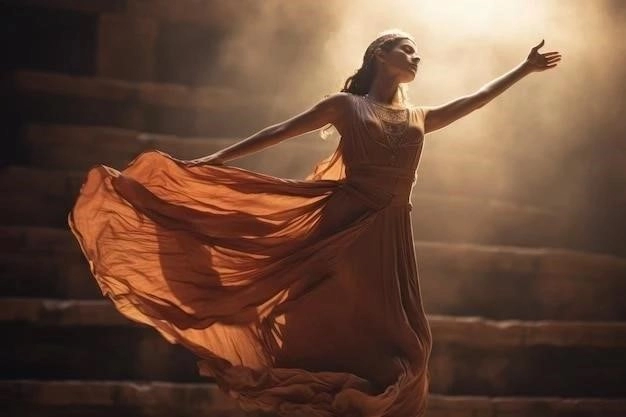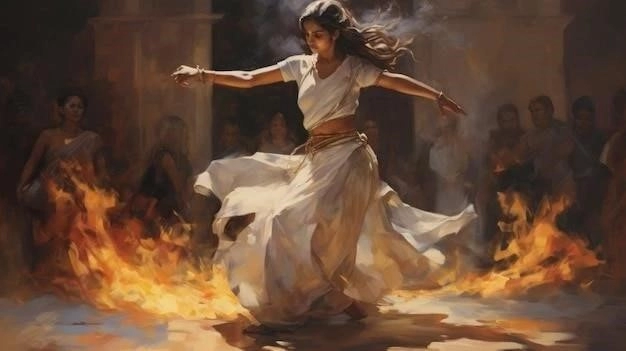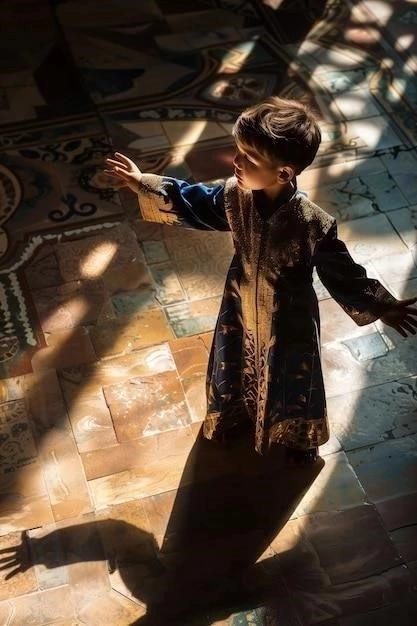The History of Dance: From Ancient Rituals to Modern Expressions
Dance, a fundamental form of human expression, has captivated hearts and minds for millennia. From ancient rituals to modern stages, dance has evolved through time, reflecting cultural shifts, artistic innovations, and the boundless possibilities of human movement. This article delves into the rich tapestry of dance history, tracing its journey from sacred ceremonies to contemporary artistry.
Ancient Origins: Dance as Ritual and Celebration
The earliest traces of dance date back to prehistoric times. Cave paintings, such as those found in Bhimbetka, India, depict dancing figures, suggesting that dance was an integral part of life for early humans.
In ancient civilizations, dance played a pivotal role in religious ceremonies, social gatherings, and storytelling. For instance:
- Ancient Egypt: Egyptians used dance in rituals dedicated to the gods, with depictions found in tomb paintings and hieroglyphics.
- Ancient Greece: Dance was intertwined with theater, mythology, and religious festivals. Greek philosophers, including Plato and Aristotle, recognized the importance of dance in education and society.
- Ancient India: The Hindu tradition embraced dance as a sacred art form, with classical Indian dance forms like Bharatanatyam and Odissi evolving over centuries.

Dance in the Middle Ages: From Courtly Dances to Folk Traditions
During the Middle Ages in Europe, dance evolved in various settings:
- Courtly Dances: Elegant and stylized dances, such as the Carol and the Estampie, emerged in royal courts, reflecting the social hierarchy and refined aesthetics of the era.
- Folk Dances: In contrast to the formality of courtly dance, folk dances, passed down through generations, celebrated rural life, seasonal cycles, and communal festivities.
The Renaissance and the Rise of Ballet
The Renaissance marked a turning point in dance history, particularly in Europe. As interest in classical arts flourished, dance transformed into a more formalized and theatrical art form. Ballet emerged in Italy during the 15th century, combining dance, music, and elaborate costumes. Catherine de Medici, an Italian noblewoman who became Queen of France, played a significant role in promoting ballet at the French court.
The Baroque Era: Opulence and Technical Mastery
The Baroque era (roughly the 17th and early 18th centuries) witnessed the continued evolution of ballet. King Louis XIV of France, an avid dancer himself, established the Académie Royale de Danse in 1661, formalizing ballet technique and training. Ballet became increasingly elaborate, characterized by intricate footwork, graceful movements, and opulent costumes.
The Romantic Ballet: Emotion, Narrative, and the Ballerina
The Romantic era (roughly the 19th century) ushered in a new era for ballet, emphasizing emotion, drama, and storytelling. Romantic ballets often featured supernatural themes, ethereal ballerinas, and expressive choreography. Iconic ballets such as “La Sylphide” (1832) and “Giselle” (1841) epitomize the Romantic style.
The Birth of Modern Dance: A Rebellion Against Tradition
In the late 19th and early 20th centuries, a new wave of dance pioneers emerged, challenging the conventions of classical ballet. Modern dance, as it became known, emphasized creative expression, individual style, and the exploration of new movement possibilities.
Key figures in the modern dance movement included:
- Isadora Duncan: Known for her free-flowing movements inspired by nature and ancient Greece.
- Ruth St. Denis and Ted Shawn: Pioneers of American modern dance, drawing inspiration from Eastern cultures and mythology.
- Martha Graham: A revolutionary choreographer who developed a highly expressive and physically demanding technique.

The 20th Century and Beyond: Diversity and Innovation
The 20th century witnessed an explosion of dance forms and styles. From jazz dance to tap dance٫ from contemporary dance to hip-hop٫ dance continued to evolve٫ reflecting cultural influences٫ technological advancements٫ and the creative spirit of choreographers and dancers alike.
Key developments in 20th-century dance included:
- The rise of American jazz dance, with its roots in African American vernacular dance traditions.
- The emergence of postmodern dance, which challenged traditional notions of dance and performance.
- The global fusion of dance styles, as choreographers and dancers drew inspiration from diverse cultures and traditions.

Conclusion: Dance as a Reflection of Humanity
Throughout history, dance has served as a powerful medium of expression, reflecting cultural values, societal norms, and the human experience. From ancient rituals to contemporary art forms, dance continues to captivate and inspire. As we move forward, the art of dance will undoubtedly continue to evolve, pushing boundaries, challenging perceptions, and reminding us of the profound beauty and expressive potential of the human body in motion.
The Evolution Continues: Dance in the 21st Century
As we progress through the 21st century٫ dance continues to evolve at a breathtaking pace. The advent of new technologies٫ globalization٫ and an increasingly interconnected world have fostered an unprecedented level of diversity and innovation within the dance world. Contemporary choreographers are pushing the boundaries of the art form٫ blurring the lines between genres٫ and exploring new avenues for creative expression.
Technology as a Catalyst for Innovation
Technological advancements have had a profound impact on contemporary dance. Choreographers are increasingly incorporating digital projections, interactive installations, and motion-capture technology into their works, creating immersive and visually stunning performances. The use of technology allows for new forms of storytelling, expands the possibilities of movement, and connects with audiences in novel ways.
Globalization and Cultural Fusion
The increased interconnectedness of the world has fostered a vibrant exchange of dance styles and techniques. Choreographers and dancers are drawing inspiration from diverse cultural traditions, fusing elements of ballet, modern dance, hip-hop, traditional folk dances, and other forms to create unique and compelling works. This cross-cultural dialogue enriches the art form, fostering understanding and appreciation for different artistic perspectives.
Breaking Barriers: Inclusivity and Accessibility in Dance
Contemporary dance is also witnessing a growing emphasis on inclusivity and accessibility. Choreographers are challenging traditional notions of beauty and virtuosity, embracing dancers of all backgrounds, body types, and abilities. Companies and organizations are actively working to create more equitable opportunities for training, performance, and participation in dance, ensuring that the transformative power of dance is accessible to all.
The Future of Dance: A Continual Exploration
The history of dance is a testament to the enduring power of human creativity and the boundless capacity for innovation. As we move forward, dance will undoubtedly continue to evolve, reflecting the complexities of our world and pushing the boundaries of artistic expression. With each new generation of dancers and choreographers come fresh perspectives, bold ideas, and a relentless pursuit of excellence that will shape the future of this captivating art form.










